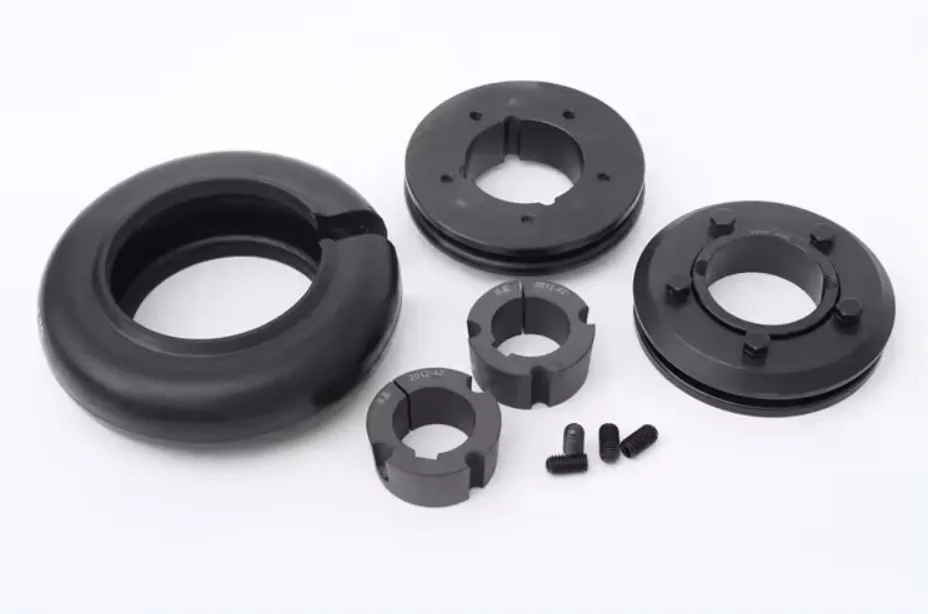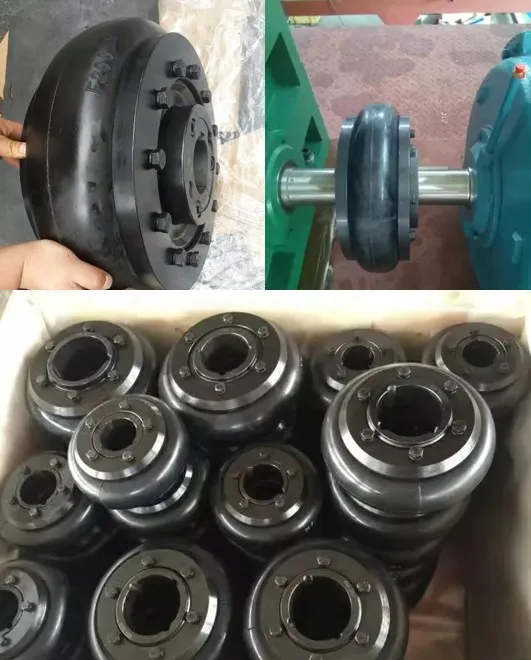Rubber Coupling for Surveillance Equipment
Introduction
In the world of surveillance equipment, the importance of a reliable and efficient rubber coupling cannot be overstated. Rubber couplings play a crucial role in ensuring smooth and accurate transmission of power and torque between various components of surveillance systems. In this blog post, we will explore the key features and benefits of rubber couplings for surveillance equipment.

1. The Role of Rubber Couplings in Surveillance Systems
Rubber couplings are essential components in surveillance systems as they provide flexible connections between different parts, allowing for the smooth transfer of power and torque. Their high torsional stiffness and vibration damping properties help minimize noise and ensure accurate transmission of signals.
2. Types of Rubber Couplings Used in Surveillance Equipment
There are several types of rubber couplings commonly used in surveillance equipment:
- Elastomeric Couplings: These couplings use elastomeric elements to provide flexibility and damping, making them ideal for applications requiring high misalignment capabilities and vibration isolation.
- Spider Couplings: Spider couplings utilize a spider-shaped elastomeric element to transmit torque while compensating for angular and parallel misalignments. They are widely used in surveillance systems due to their compact design and high torque capacity.
- Tire Couplings: Tire couplings are known for their high torque capacity, flexibility, and shock absorption capabilities. They are commonly used in heavy-duty surveillance applications.
- Diaphragm Couplings: Diaphragm couplings offer high torsional stiffness, precision, and reliability, making them suitable for applications requiring accurate power transmission, such as monitoring and tracking systems.
3. Advantages of Rubber Couplings for Surveillance Equipment
Using rubber couplings in surveillance equipment offers several advantages:
- Flexibility and Misalignment Compensation: Rubber couplings can accommodate angular, parallel, and axial misalignments, ensuring smooth operation even in challenging installation conditions.
- Noise and Vibration Reduction: The inherent damping properties of rubber couplings minimize noise and vibration, enhancing the overall performance and accuracy of surveillance systems.
- High Torque Transmission: Rubber couplings can efficiently transmit high torque, making them suitable for demanding surveillance applications.
- Shock Absorption: The shock-absorbing capabilities of rubber couplings protect sensitive surveillance equipment from sudden impacts and vibrations, prolonging their lifespan.
- Easy Installation and Maintenance: Rubber couplings are designed for easy installation and require minimal maintenance, saving time and effort for surveillance system operators.

How to Install Rubber Couplings
Installing rubber couplings correctly is crucial for their optimal performance. Follow these steps for a successful installation:
- Ensure the shafts of the connected equipment are clean and free from any debris.
- Inspect the rubber coupling for any damage or wear. Replace if necessary.
- Align the shafts of the connected equipment within the specified tolerances.
- Slide the rubber coupling onto one of the shafts, making sure it sits fully against the shoulder of the shaft.
- Align the bolt holes on the coupling flanges with those on the other shaft.
- Insert and tighten the bolts, ensuring they are tightened evenly and to the recommended torque.
- Check for any misalignment or binding. Adjust if needed.
How to Choose or Customize the Right Rubber Coupling
When selecting or customizing a rubber coupling for your surveillance equipment, consider the following factors:
- Torque Requirements: Determine the maximum torque the coupling needs to transmit, ensuring it meets or exceeds the required torque capacity.
- Misalignment Compensation: Assess the expected angular, parallel, and axial misalignments in your system and choose a coupling that can accommodate those misalignments effectively.
- Environmental Conditions: Consider the temperature range, presence of chemicals or contaminants, and other environmental factors to ensure the rubber coupling’s compatibility and durability.
- Vibration and Shock: Evaluate the level of vibration and shock the surveillance equipment may experience and select a coupling with appropriate damping and shock absorption capabilities.
- Space Limitations: Take into account any space constraints or limitations in your system and choose a compact and lightweight coupling that fits within the available space.

About HZPT
HZPT is a modern enterprise located in Hangzhou, Zhejiang Province, specializing in the research, development, production, and international trade of coupling products. With a strong focus on integrity, innovation, and customer satisfaction, HZPT aims to become a globally recognized leader in the industry.
Our company specializes in the production and sale of various rubber couplings, including drum couplings, pin bush couplings, serpentine spring couplings, universal couplings, star couplings, expansion couplings, diaphragm couplings, and tire couplings. We have a comprehensive quality management system and our own technology development and testing department. Our certifications include CQC, ISO, and CE.
With a track record of serving over a hundred cooperative enterprises, we prioritize customer-centric operations and strive for mutual development through sincere cooperation. Choose HZPT for professional, reliable, and high-quality rubber couplings for your surveillance equipment needs.
